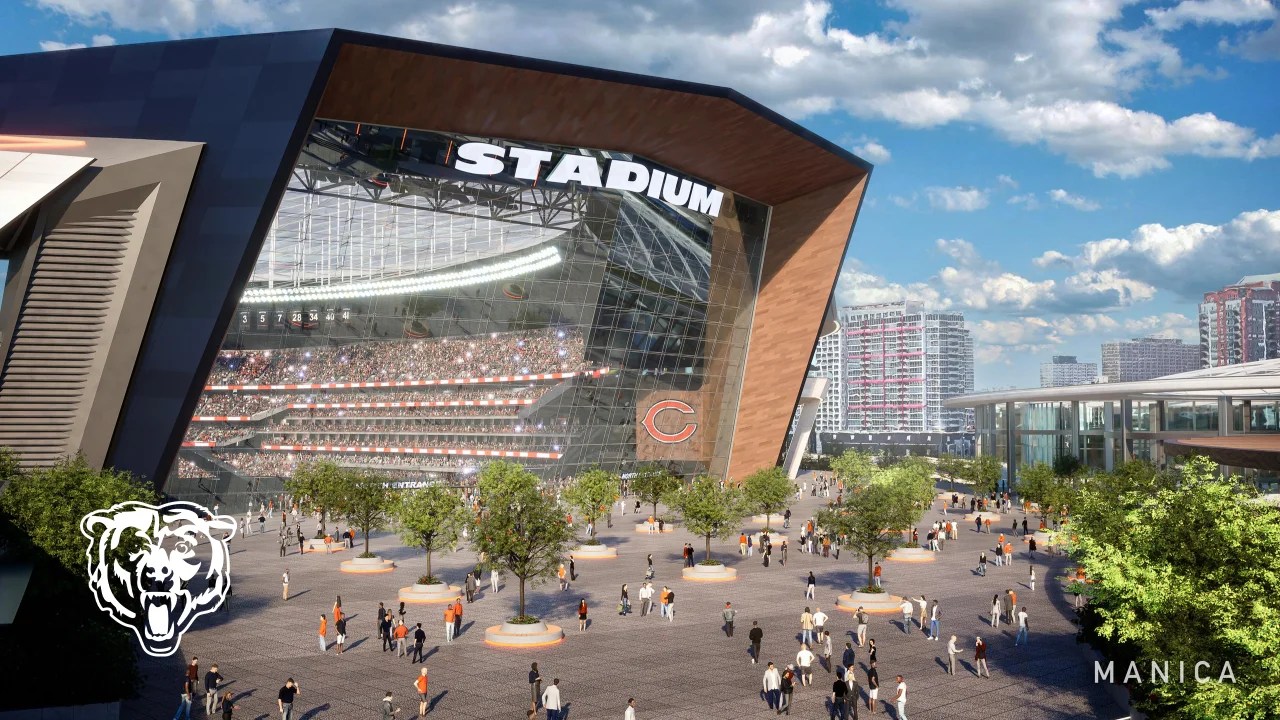The city of Chicago began installing barricades at multiple intersections near the downtown area on Wednesday, as city officials said a public safety drill was slated to take place on Thursday.
City employees could be seen putting large barricades up at several intersections in Streeterville and the Gold Coast, including on East Oak Street, East Walton Street and North Michigan Avenue.
Office of Emergency Management and Communications officials confirmed with NBC that a drill was scheduled for Thursday with city public safety officials, with setup taking place Wednesday.
A city official issued a statement a short time later, saying that public safety workers were installing "assets" in downtown.
"The city of Chicago is piloting public safety measures and will be temporarily staging assets throughout the downtown area," according to a statement.
Chicago Ald. Brian Hopkins of the 2nd Ward called the changes "preparations put into place that take time," noting that Jersey wall barriers were "moving around at strategic locations" and that decorative flower pots were being used as barricades, placed on curb lanes and sidewalks that could "easily be moved if we have to block a street."
Local
"There’s some tactical tools we’d like to use; we’re doing as much as we can in advance," Hopkins said.
Barriers were placed at several locations, including along Michigan Avenue and on Walton. Oak Street was also converted into a one-way street, turning it into an east-to-west thoroughfare.
Hopkins said he was concerned about what he called a "spillover effect" from unrest in Kenosha, Wisconsin, after police shot a Black man on Sunday in an incident that was captured on video and sparked outrage nationwide.
While Hopkins said there were a "variety of rumored events that may or may not happen," he noted that he didn't "want to jump at every shadow" and "can't react to all of them."
Kenosha is about 50 miles north of Chicago, where the city's mayor and top cop have themselves faced ongoing protests and unrest over police brutality and accountability in the wake of the police killing of George Floyd in Minneapolis in late May.
Chicago Police Supt. David Brown said Monday that the department was monitoring the situation unfolding in Kenosha, calling the video of the police shooting "god-awful."
'This week will mark the 57th anniversary of the March on Washington and Martin Luther King's 'I Have a Dream' speech," Brown said, when asked if he was concerned about unrest in Chicago in response to the Kenosha shooting.
"One of the things that was emphasized by Martin Luther King was, 'A threat to justice anywhere is a threat to justice everywhere.' So what happens in Wisconsin or any other city throughout our country does affect all of us, and yes, we are monitoring that situation," he continued.
"We are obviously preparing for a protest this coming weekend at the Mag Mile and all of our deployment strategies are being practiced and we are obviously adjusting based on the information coming from not only what happened in Wisconsin but what happens here in Chicago," Brown added.
The shooting in Wisconsin took place as the U.S. continues to experience a kind of racial reckoning following Floyd's death, and amid the global coronavirus pandemic that has impacted minority communities overall at higher rates. Protests around the U.S. continue, calling for racial justice as well as reforms and accountability in policing.
Those protests have continued in Chicago, and several other cities, for the nearly three months since an officer knelt on Floyd's neck for almost nine minutes as he cried out that he couldn't breathe.
Many of the protesters in Chicago have called for funding from the Chicago Police Department to be diverted to other community resources, like violence prevention, mental health clinics and other initiatives.
While many of the protests in Chicago have remained peaceful, the city has also seen looting and chaos erupt at points amid the unrest. On Aug. 10, more than 100 people were arrested and more than a dozen officers injured as groups broke into stores and stole merchandise in several neighborhoods near Chicago's downtown area, according to police.
That destruction and violence happened months after a first round of looting took place citywide immediately following Floyd's death, and just hours after Chicago police officers - who were not wearing body cameras - shot a man in the Englewood neighborhood.
The following weekend, officers and demonstrators clashed in the city's downtown area. Videos of the scene appeared to show officers cordoning protesters off in a technique a coalition of aldermen identified as kettling, a controversial crowd control tactic in which police corral a group into a small area and surround them on all sides to immobilize them, direct them to a single exit or facilitate arrests, sometimes all of the above
Chicago police have placed blame on protesters for escalating violence against officers, arresting at least two dozen people, some charged with felonies in connection with the protest.



